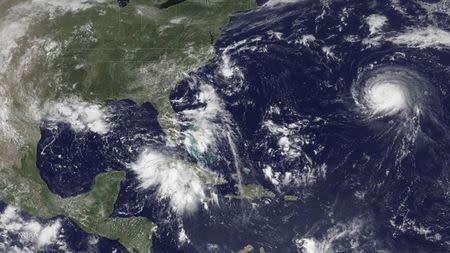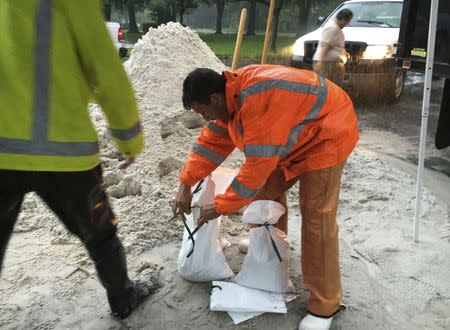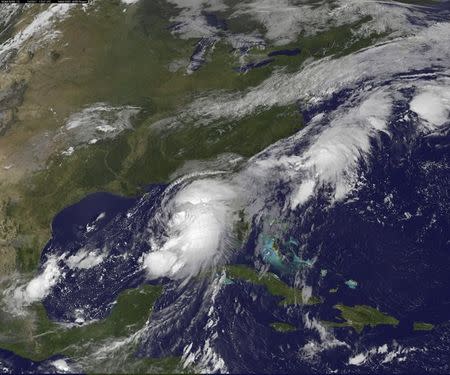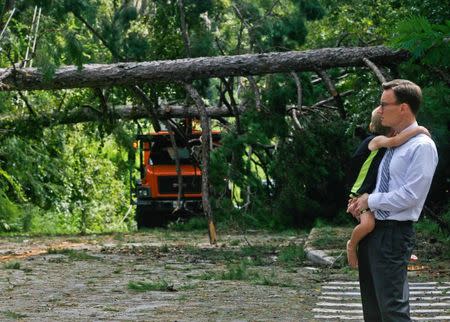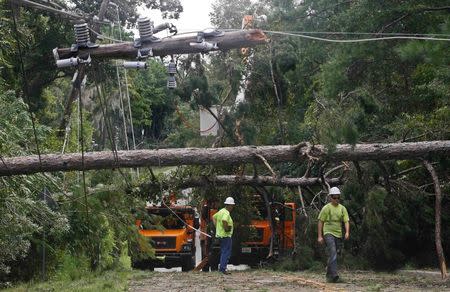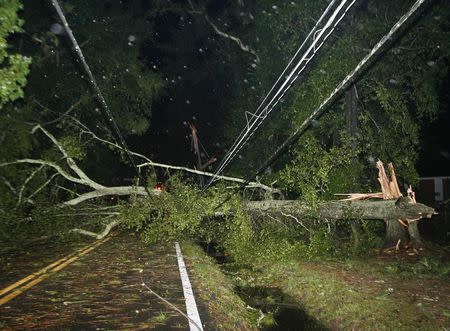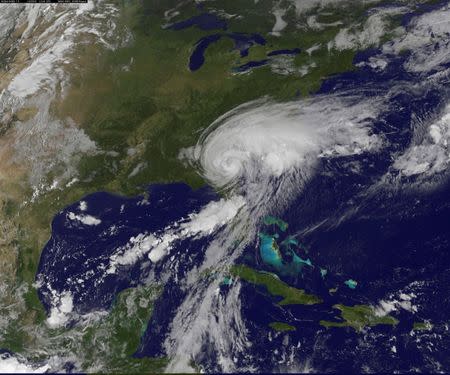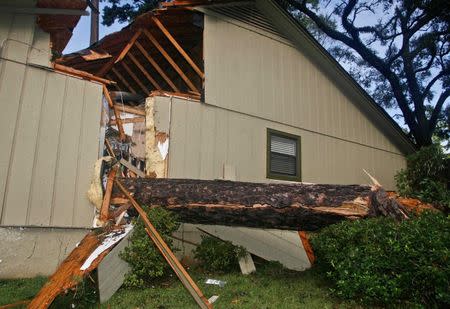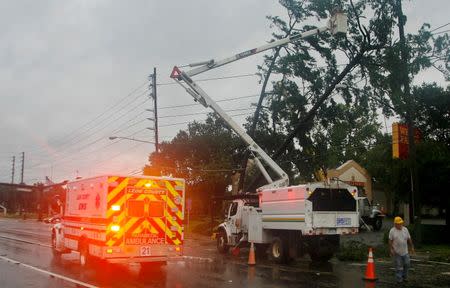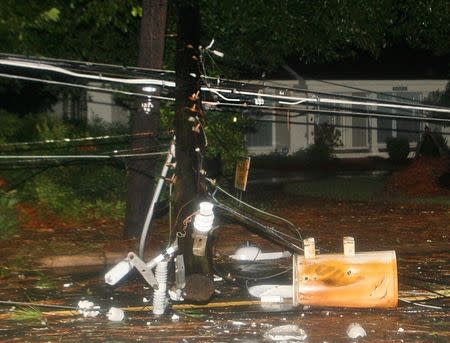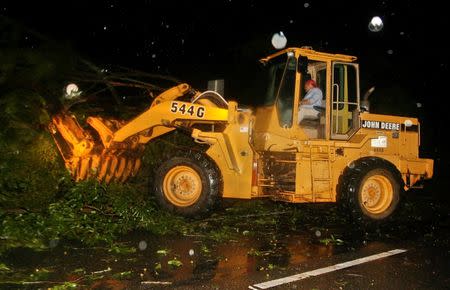Hermine pounds Florida, raising new Zika fears, then heads north
By Letitia Stein TAMPA, Fla. (Reuters) - Hurricane Hermine wreaked havoc across Florida on Friday, knocking out power to nearly 300,000 homes and businesses, flooding low-lying areas and raising concerns about the spread of the Zika virus from pools of standing water left behind. The first hurricane to make landfall in Florida in 11 years, Hermine came ashore early on Friday near the Gulf shore town of St. Marks, 20 miles (30 km) south of the capital of Tallahassee, packing winds of 80 mph (130 kph) and churning up a devastating storm surge in coastal areas. Torrential downpours and high surf left parts of some communities under water early Friday, with mandatory evacuations ordered in parts of five northwestern Florida counties. One storm-related death was reported by authorities in the northern Florida town of Ocala, where a fallen tree killed a homeless man sleeping in his tent. Hermine, later downgraded to a tropical storm, was expected to snarl Labor Day holiday travel as it churned northeast after battering Florida's $89 billion tourism industry. As of 5 p.m. EDT (2100 GMT), the fourth named storm of the 2016 Atlantic hurricane season was passing near Charleston, South Carolina with strong winds and heavy rains, the National Hurricane Center (NHC) said. The governors of Georgia, North Carolina, Maryland and Virginia declared emergencies for all or parts of their states, and a state of emergency remained in effect for most of Florida. Though maximum sustained winds had weakened to 50 mph (80 kph), the tempest headed to the Atlantic seaboard along a path where tens of millions of Americans live, prompting storm watches and warnings stretching as far north as Rhode Island, NHC said. LIKELY TO REGAIN STRENGTH OVER ATLANTIC The storm was projected to creep north along the Carolina coast Friday night, then gather strength after moving offshore into the Atlantic on Saturday morning, possibly reaching near-hurricane intensity by late Sunday, according to the center. In addition to powerful winds extending up to 185 miles (295 km) from its center, Hermine was expected to unleash a dangerous storm surge in the Hampton Roads area of tidewater Virginia, where flooding could reach 3 to 5 feet deep, the NHC said. The storm also could douse several southeastern and mid-Atlantic states with up to 15 inches (38 cm) of rain through Sunday. New Jersey, still mindful of devastation from superstorm Sandy in 2012, was on high alert as emergency officials advised residents to prepare for flooding, high winds and a surge of seawater. New York Governor Andrew Cuomo on Friday activated his state's emergency operations center and ordered officials to stockpile resources, including sandbags and generators. New York City Mayor Bill De Blasio said residents should avoid beach waters for fear of life-threatening riptides. "I say that to people who go the beach, I say that to surfers: Don't even think about it," De Blasio told reporters. In Florida, concerns over the standing water in which mosquitoes breed intensified as the state battles an outbreak of the Zika virus. "It is incredibly important that everyone does their part to combat the Zika virus by dumping standing water, no matter how small," Florida Governor Rick Scott told a news conference, also warning people to watch out for downed power lines and avoid driving through standing water. Overnight, Pasco County crews rescued more than a dozen people after their homes were flooded. Richard Jewett, 68, was rescued from his home in New Port Richey, just north of Tampa, as emergency teams carried out a mandatory evacuation. "The canal started creeping up toward the house, and even though it wasn't high tide it looked like it was coming inside," Jewett said. In the island community of Cedar Key, waters rose more than 9.5 feet (2.9 meters), among the highest surges ever seen, the National Weather Service said. (Additional reporting by Zachary Fagenson in Hudson Beach, Fla., Brendan O'Brien in Milwaukee, Laila Kearney in New York and Jon Herskovitz in Austin; Editing by Daniel Trotta and Cynthia Osterman)
